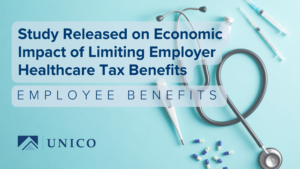What is a self-funded plan?
In a self-funded (or self-insured) health plan, the employer assumes the risk and responsibility of medical claims instead of contracting with an insurance carrier to pay claims. The employer sets premium rates based on claims history and typically benefits from lower administration costs and greater flexibility both in plan design and cash flow within the business.
A self-funded plan may contract with a third party administrator (TPA), but it is still a self-funded plan because the company is responsible for funding the claims payments.

Advantages of self-funding
Plan customization
Instead of trying to purchase a “one size fits all” health plan, self-funded plans can be customized to fit the needs of an employer’s workforce.
Reduced overhead costs
Carriers assess a risk charge for insured policies (approximately 2 percent annually), but self-insurance removes this charge.
Reduced state premium taxes
Self-insured programs, unlike insured policies, are not subject to state premium taxes. The premium tax savings is about 2 to 3 percent of the premium dollar value.
Avoidance of state-mandated benefits
Self-insured plans are exempt from state insurance laws, subject only to Employment Retirement Income Security Act (ERISA) compliance.
Improved cash flow
Self-insured employers do not have to pre-pay for coverage, and claims are paid as they become due.
Additional benefits
- Choosing benefits services à la carte
- Flexibility in plan designs, administration and offered services
- Customizable stop-loss insurance to reduce the risk associated with high claims
- Additional cash flow if reserves are held in an interest-bearing account
Complete customization
One of the greatest assets offered by self-funding is the complete freedom to structure benefits according to needs of your company. Employers can choose what benefits they want to offer, while opting to insure individual benefits through traditional means or forgo offering them altogether. The following benefits may be self-insured:
- Health care (indemnity, PPO, POS and HMO)
- Dental
- Short-term disability
- Prescription drugs
- Vision care
Additional control
Employers can also make the final call on important variables, such as:
- Eligibility
- Exclusions
- Cost-sharing
- Policy limits
- Retiree benefits
Employers are also free to administer benefits themselves if they have the resources, or to retain a third-party administrator at a fraction of the cost of a traditional benefits provider.
Self-insured plans and stop-loss insurance
One component that many self-insured plans use is an extra feature called stop-loss insurance. The purpose of stop-loss insurance is to provide financial protection to a self-insured plan sponsor by capping and further defining the plan’s financial exposure. A stop-loss contract operates differently from general insurance because it is actually insuring the employer and not the individual employee. It is important to grasp this concept. When a plan is self-insured, the stop-loss contract insures the employer against catastrophic losses under the plan. The medical plan established by the employer accepts the responsibility for paying providers’ claims for individuals but limits its risk with stop-loss coverage.
Stop-loss insurance is neither health insurance nor reinsurance. It is more closely comparable to a catastrophic coverage plan that indemnifies a plan sponsor from abnormal claim frequency and severity. Stop-loss claim reimbursements can be made for a variety of benefits, including medical, prescription drug, dental and others. Severe, high-dollar claims such as cancer, organ transplants and dialysis are considered “shock loss” claims, which can give plans the most concern when they consider self-insuring. The protection afforded by a comprehensive stop-loss coverage shows its value in helping to financially manage these catastrophic events.
Specific stop-loss
Specific stop-loss, also referred to as individual stop-loss, protects a plan against individual catastrophic claim occurrences. This type of stop-loss coverage shifts responsibility for a claim to the insurer once it exceeds a certain dollar amount for a specific claim.
- Example: An employer with a specific stop-loss attachment point of $25,000 would be responsible for the first $25,000 in claims for each individual plan participant each year. The stop-loss carrier would pay any claims exceeding $25,000 in a calendar year for a particular participant.
Aggregate stop-loss
Aggregate stop-loss limits a self-insured plan’s financial exposure for the entire plan year (or policy year) and protects against abnormal claim frequency across the entire group of individuals. This type of stop-loss coverage protects the employer against high total-health-plan claims.
- Example: Aggregate stop-loss insurance with an attachment point of $500,000 would begin paying for claims after the plan’s overall claims exceeded $500,000. Any amounts paid by a specific stop-loss policy for the same plan would not count toward the aggregate attachment point.
Other group health insurance plans
Fully insured
A traditional group health insurance plan. The insurance company assumes the financial and legal risk of loss in exchange for a fixed premium paid by the employer. The insurance carrier pays health care claims as outlined in the policy.
Level premium
Sometimes called partially-funded, the employer pays a set amount each month. At the end of the year, if the total paid out in claims is greater than the employer’s contribution, the insurance company covers the difference.






